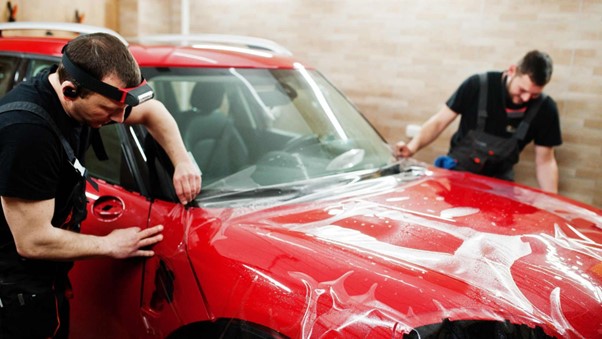
Electronic Devices-perhaps, the sole reason behind a common man’s survival in the busy urban lives of today. We require a mobile phone to communicate, a refrigerator to preserve the food, an oven to bake, a television to stay entertained, and the long list goes on. It appears as if the very essence of our modernized lives relies on these electronic devices. Well, because we heavily rely on these gadgets, we should keep them maintained and clean them vigilantly. Imagine cleaning your Apple iPhone when suddenly you realize that the cloth has scratched the glorious, shiny screen. I am sure that the mere thought might seem horrifying!
Hence, to help you clean your electronic devices safely, here is a compilation of the most useful ways.

Table of Contents
Phones & Tablets
Ugly scratches, smudges, and cracks on the screens of our phones and tablets might not represent the best of our tidy, dressed-up selves, especially in public. Apart from giving a negative impression, a dirty or damaged screen has a detrimental effect on our eye-sight and may even induce a disturbed state of mind. Thus, one must maintain a clean smartphone or tablet screen.
To get rid of the unwanted blemishes on your screen and bring back its spotless shine, use a damp, lint-free microfiber cloth. Move the micro-fiber cloth against the glass screen in a gentle, circular motion to sweep off all the grime. The micro-fiber cloth has microscopic fibers that attract all the dust and oils. You may use plain or soapy water for removing e stubborn particles and grime. However, before even a single drop of water comes into contact with your phone is better to switch it off to protect the machinery.
Since smartphone and tablet screens have a sensitive, skin oil-repelling coating, it is wiser to avoid harsh chemical-containing glass-cleaning products. You must avoid using paper or tissue towels as well. For an intensive cleaning session, use a mixture with a 1:1 ratio of water and vinegar, or water or alcohol. Dip a cotton swab slightly in this mixture and wipe the most-used areas (such as the central home or power off button) of the gadget. Remember, liquids in large amounts must not come in to contact with your phone/tablet unless your device is waterproof. For cleaning the headset port and other open ports, you can use a bent-out paper clip with a tape at the tip.

Source
Air Conditioners
You are considering to buy an air conditioner. Let’s suppose it is Gree, a name of reliance in Pakistan. What will input first in the search engine; Gree AC’s condenser type or Gree AC price in Pakistan? I bet you will go for Gree AC price in Pakistan first!
Despite the utmost necessity of electronic devices, their prices are increasing more than ever. In this situation, where you have to invest in an expensive necessity, then it is wiser to maintain it. Cleaning it will help you save your hard-earned money continuously for the replacement of expensive electronic devices like air conditioners and refrigerators.
To clean an air conditioner, you will divide your cleaning session into two parts that are an outdoor unit and indoor unit cleaning. Start with the outdoor unit where you will have to remove the outer casing and access the condenser coils. Usually, a screwdriver will be enough to remove the casing. Once you have found the condenser coils, use a duster with hard bristles to remove any caked dirt or grime. Also, you can spray a cleaning agent and use a damp cloth to wipe the dirt off. Let it dry for at least 10-minutes before replacing the parts. Repeat the procedure for outer casing too.
Now, move onto the cleaning of the indoor unit. Open the front grille that will reveal one or two mesh filters. Remove them and either shake them outdoors or wash them in your bathroom. You can even vacuum it. As these mesh structures filter out all the dust and dirt, they are the dirtiest part of the air conditioner. Thus, they need frequent and regular cleaning. If you want to go for deep cleaning, then access the fan coils and spray a cleaning agent. Then, rinse it with warm water. You will have to be careful so that the dirty water runs off in the drip pan only. Once the fan coils dry, replace everything and give the outer casings a quick wipe.

Source
Refrigerator
Cleaning a refrigerator may seem a disgusting task, especially if you have to remove food items that you bought ages ago. But, you definitely cannot keep on using a device that is home to microorganisms. So, get yourself a pair of cleaning gloves, cleaning agents, scrubs, sponges, and a handy cloth because this is going to be messy.
First, switch off the power supply so that you are safe when cleaning. Start by emptying your fridge and placing all the food items somewhere they do not get spoiled. Then, sort through the rotten, expired, and other food items until you have only the ones that are fresh as well as usable. Next, remove the shelves or crispers, and clean them with a cleaning agent so that they are thoroughly clean. Wash it once and let it dry. Then, use the cleaning tools to wipe off the fridge’s interior, including shelves, compartments, and walls. Do not forget the gasket that you can clean with a ½: ½ ratio of water and vinegar. Damp your cloth with the solution and clean the gasket. Remember not to use too much the solution as it can damage the gasket. Once completed, replace everything from shelves to the food containers. Use suitable cleaning agents and water to wipe the fridge’s exterior. Let it dry and turn on the power supply back.

Source
Speaker & Headphones
Everyday dust can easily accumulate in the narrow crevices of speakers and headphones. To keep them functioning efficiently and for the longevity of our devices, it is important to clean them regularly.
For safely cleaning your stereo speakers, use a soft brush or microfiber cloth to clean off the dust from the grill of the speakers. Next, remove the grill and clean the inner cabinet using the same brush or cloth. Remember, the cones of the speaker are very delicate as they are made up of paper-like material. Hence, wipe the cones and area surrounding them gently with a cotton swab. You can use a piece of cloth soaked in soapy water to scrub off fingerprints and grime outside of the cabinet. For a smart speaker, you can use the micro-fiber cloth for wiping the screen, fabric-covered part, or plastic body.
Similarly, ear-wax and grease can also form a layer on our headphones, if used extensively. It is important to clean these not only for the longevity of the earphones but also, to protect ourselves from ear infections or ear-wax blockage.
 Using a soft and dry toothbrush, gently clean the mesh side of the earphones. Make sure, not a single drop of water, soapy water, or any cleansing product comes in contact with this part of your earphones. The earphones may stop working almost immediately. Dampen a cloth in hand-sanitizer or alcohol to clean the length of the wires and the non-mesh side of the headphones. In case your headphones have removable silicone ear tips, you can detach them, and soak them in warm soapy water for 3-5 minutes. Using a paper towel, dry them completely before reattaching.
Using a soft and dry toothbrush, gently clean the mesh side of the earphones. Make sure, not a single drop of water, soapy water, or any cleansing product comes in contact with this part of your earphones. The earphones may stop working almost immediately. Dampen a cloth in hand-sanitizer or alcohol to clean the length of the wires and the non-mesh side of the headphones. In case your headphones have removable silicone ear tips, you can detach them, and soak them in warm soapy water for 3-5 minutes. Using a paper towel, dry them completely before reattaching.
Laptop, Desktop PC & Television
With the passage of time, layers of dust and junk cumulates on laptops and PC. Dirt and debris find a home in the deep, narrow spaces between the keys on the keyboard, intake grills, and even on the flat screen of the monitor. The massive yet dispersed accumulation of dirt does not only hinder the performance of the machine but also becomes a germ-junction. Therefore, to maintain healthy and efficient functioning of our device as well as of our biological machinery, we must clean our laptops and Desktop PC’s as often as we can.
To begin with, the physical cleaning of your PC, firstly unplug or shut down the computer and give a quick wipe to the following, with a lint-free microfiber cloth:
- Mouse
- Keyboard
- Monitor
- Fan (s)
While the lint-free cloth may be sufficient enough to remove all the debris from the mouse, you may need to clean the keyboard in detail.
There’s a strange fact about the keys on the keyboard; they are dirtier than a toilet seat. Perhaps, this piece of information may give you a clearer idea of why a dry cloth cannot remove all the germs. You must disinfect the keys using an alcohol-containing wipe or spray. You can even disassemble the keys, wash them using an appropriate sanitizing solution, dry them, and then assemble them again. This practical method applies to both laptops and Desktop PC.
To clean the fan(s) and intake grills use a damp cloth or expose them to a vacuum cleaner. Dismantling the hardware and machinery is not recommended, as it may damage sensitive parts of the machinery. For the monitor, prepare a solution of isopropyl alcohol or white vinegar with distilled water in a ratio of 1:1. Using a cloth slightly dampened with it, wipe the screen and its frame.
Televisions are perhaps the easiest electronic devices to clean. Use a microfiber cloth to clean all the dirt and dust accumulation from the surface. It is recommendable to start from the top to the end of the screen. You can even use microfiber dust wander for light cleaning.






